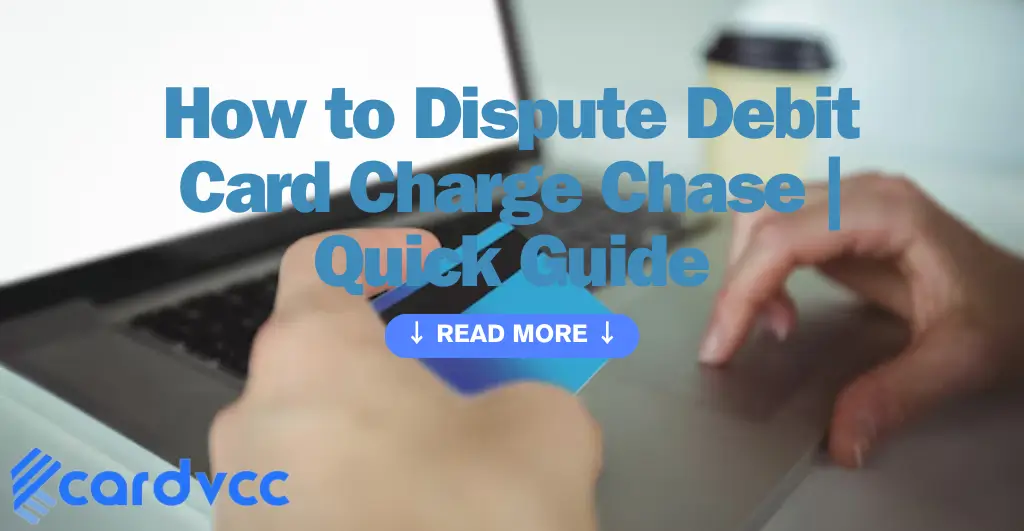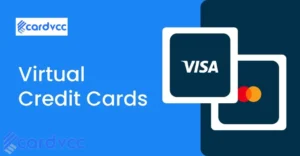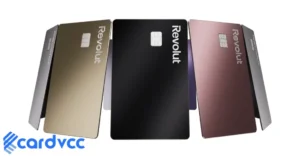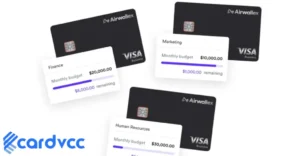Contact their customer service immediately to dispute a debit card charge with Chase. Provide transaction details and explain the issue.

Disputing a debit card charge with Chase is a straightforward process that can help resolve unauthorized or incorrect transactions. Acting quickly is crucial to increase the likelihood of a successful dispute. Gather all necessary information, such as transaction details, receipts, and any communication with the merchant.
This will support your case and facilitate a smoother resolution. Chase’s customer service representatives are trained to handle such disputes and will guide you through the necessary steps. By following their instructions and providing accurate information, you can protect your finances and promptly address any erroneous charges.
Identify The Charge
Sometimes, you may see an unfamiliar charge on your Chase debit card. To resolve this, you need to identify the charge first. Follow these steps to spot the charge and take action.
Review Your Statement
Start by reviewing your monthly statement. Log in to your Chase account online or via the mobile app. Look for any charges that you don’t recognize. Make a note of the charge date, amount, and the merchant name.
| Charge Date | Amount | Merchant Name |
|---|---|---|
| 2023-10-01 | $50.00 | Unknown Merchant |
| 2023-10-05 | $30.00 | Recognized Merchant |
Check For Duplicate Charges
Next, check for duplicate charges. Sometimes, a charge might appear more than once by mistake. Compare the charge amounts and dates. You may need to dispute one if you see two charges for the same amount and merchant.
- Look for similar amounts.
- Check the transaction dates.
- Note any repeated merchant names.
Duplicate charges can be a simple error. Identifying them quickly can save you time and stress.
Gather Necessary Information
Disputing a debit card charge with Chase can be simple. The first step is to gather the necessary information. This ensures you have all the details required for the dispute process. Below, we break down the key information you need.
Transaction Details
Start by collecting the transaction details. These include:
- Transaction date
- Merchant name
- Transaction amount
- Transaction ID
Ensure these details match your records. They are crucial for your dispute case.
Supporting Documentation
Next, gather supporting documentation. This could be:
- Receipts
- Invoices
- Emails with the merchant
- Bank statements
These documents help prove your claim. They provide evidence of the disputed charge.
| Document Type | Purpose |
|---|---|
| Receipts | Verify purchase details |
| Invoices | Confirm billed amount |
| Emails | Show communication with the merchant |
| Bank Statements | Highlight the disputed charge |
Having these documents ready will streamline your dispute process. It ensures you provide a strong case to Chase.
Contact Chase Bank
If you have an issue with a debit card charge, the first step is to contact Chase Bank. They offer several ways to reach out for help. This section will guide you through the process.
Customer Service Hotline
One of the quickest ways to dispute a charge is by calling the Chase Customer Service Hotline. Follow these steps:
- Dial the customer service number on the back of your card.
- Listen to the automated options, and choose the one for disputes.
- Speak to a representative and explain the issue.
The representative will guide you through the dispute process. Always note down any reference numbers given.
Online Dispute Form
If you prefer online communication, use the Online Dispute Form. Here’s how:
- Log in to your Chase online account.
- Navigate to the “Account Services” section.
- Select “Dispute a Charge” and fill out the form.
Provide all necessary details about the disputed charge. Submit the form and wait for a confirmation email.
Both methods are efficient. Choose the one that suits you best. Remember to keep copies of all communications for your records.
Explain The Dispute
Disputing a debit card charge with Chase can be straightforward. To succeed, you need a clear explanation. This section will guide you through explaining your dispute effectively.
Clear Description Of Issue
Provide a clear description of the issue. State the date of the transaction. Mention the amount and the merchant involved. Explain why you believe the charge is incorrect.
Use short sentences. Avoid complicated words. Make sure your explanation is easy to understand.
Provide Evidence
Gather all necessary evidence. This will support your dispute. Types of evidence can include:
- Receipts
- Email confirmations
- Bank statements
- Correspondence with the merchant
Ensure your evidence is clear and organized. Label each piece of evidence. This makes it easier for Chase to review your case.
| Type of Evidence | Description |
|---|---|
| Receipts | Proof of purchase or service |
| Email Confirmations | Order or cancellation confirmations |
| Bank Statements | Show disputed charge |
| Correspondence | Emails or chats with the merchant |
Follow Up
After you have filed a dispute with Chase, the next step is to follow up. This ensures that your case is progressing and that you stay informed about updates. Following up can mean tracking your dispute status and understanding Chase Bank’s response timeline.
Tracking Your Dispute
Tracking your dispute is essential. You need to know where your case stands. Chase offers several ways to do this:
- Online Banking: Log into your Chase account online.
- Mobile App: Use the Chase Mobile app for updates.
- Phone: Call Chase customer service at 1-800-935-9935.
Once logged in, navigate to the “Account Activity” section. Here, you can see the status of your dispute. You may also receive email notifications from Chase about your case.
Chase Bank Response Timeline
Understanding the response timeline helps you manage expectations. Chase Bank typically follows these timelines:
| Action | Time Frame |
|---|---|
| Initial Acknowledgment | Within 24 hours |
| Investigation | Up to 10 business days |
| Provisional Credit | Within 10 business days |
| Final Resolution | Up to 45 days |
Chase will acknowledge your dispute within 24 hours. They will then investigate for up to 10 business days. You may receive a provisional credit within this time. The final resolution can take up to 45 days.
Make sure to keep all related documents. These include emails, receipts, and any communication with Chase. This documentation can be crucial if there are delays or issues.

Do virtual credit cards prevent online scams?
Online shopping has become a big part of our lives. With this convenience comes the risk of online scams. Scammers are always finding new ways to steal our money. But, there is a way to protect yourself. One way is by using virtual credit cards.
What are Virtual Credit Cards?
A virtual credit card is a special type of card. It is not a physical card you can hold. Instead, it is a digital version of your credit card. You can use it for online shopping. It has a unique number, expiration date, and security code.
How Do Virtual Credit Cards Work?
Virtual credit cards work just like regular credit cards. You can enter the card details when you make a purchase online. The difference is that the card details are not your real credit card details. This keeps your real card information safe.
Features of Virtual Credit Cards
Virtual credit cards have many features. These features help protect you from online scams. Here are some of the most important features:
- Unique Card Number: Each virtual card has a different number.
- Expiration Date: You can set a short expiration date.
- Spending Limit: You can set a limit on how much money can be spent.
- One-Time Use: Some virtual cards can only be used once.
Benefits of Using Virtual Credit Cards
Using virtual credit cards has many benefits. These benefits can help keep you safe from online scams. Here are some of the top benefits:
- Protection of Real Card Details: Your real card details are never shared.
- Limited Exposure: If a scammer gets your virtual card, they cannot steal much.
- Easy to Cancel: You can cancel a virtual card anytime.
- Control Over Spending: You can set spending limits to control your budget.
How to Get a Virtual Credit Card
Getting a virtual credit card is easy. Many banks and financial services offer them. You can also join Cardvcc. Cardvcc allows you to create virtual credit cards instantly. Here is how you can get a virtual credit card:
- Contact your bank or financial service provider.
- Ask if they offer virtual credit cards.
- Sign up for a virtual credit card service.
- Follow the instructions to create your virtual card.
Steps to Use a Virtual Credit Card
Using a virtual credit card is simple. Here are the steps you need to follow:
- Create a virtual credit card through your provider.
- Get the unique card number, expiration date, and security code.
- Enter the card details when you make an online purchase.
- Set the spending limit and expiration date if needed.
Do Virtual Credit Cards Prevent Online Scams?
Yes, virtual credit cards can help prevent online scams. They add an extra layer of security. Here is how they help:
- Hiding Real Card Information: Scammers cannot get your real card details.
- Short Expiration Dates: Cards expire quickly, reducing risk.
- Spending Limits: Limits prevent large unauthorized transactions.
Real-Life Examples of Virtual Credit Card Use
Many people have used virtual credit cards successfully. Here are some real-life examples:
- Online Shopping: People use virtual cards for safer online shopping.
- Subscription Services: Virtual cards are used for subscription services.
- Travel Bookings: Travelers use virtual cards for booking hotels and flights.
Join Cardvcc & Instantly Create Virtual Credit Cards
If you want to start using virtual credit cards, join Cardvcc. Cardvcc allows you to create virtual credit cards instantly. This can help you stay safe from online scams. Visit cardvcc.com to learn more and get started.
Temporary Credit
Disputing a debit card charge with Chase often involves receiving a Temporary Credit. This credit helps ease your financial worries while the dispute is being resolved.
What It Means
A Temporary Credit is a provisional amount credited to your account. This occurs while Chase investigates your disputed charge. It acts as a placeholder, ensuring you have funds available.
How It Affects Your Account
This credit will show as a positive balance in your account. It might look like you received a refund. But remember, it’s temporary. Chase will investigate the dispute. If the dispute is resolved in your favor, the credit becomes permanent.
| Scenario | Outcome |
|---|---|
| Dispute Approved | Credit stays in your account |
| Dispute Denied | Credit is removed from your account |
Keep track of your account balance. This helps you avoid overspending due to the temporary credit. You should know the exact status of your dispute. Check your Chase account regularly for updates.
If the dispute is denied, the temporary credit will be reversed. This means the amount will be deducted from your account. Plan your expenses accordingly to avoid surprises.
Resolution Process
Disputing a debit card charge with Chase can seem complex. The resolution process helps resolve the issue step by step. This guide explains each part clearly. It ensures you get a fair outcome.
Possible Outcomes
Once you file your dispute, Chase investigates. They review all details and evidence. There are three possible outcomes:
- Approval: The charge is found to be incorrect. Your account is credited.
- Partial Approval: Only a part of the charge is refunded.
- Denial: The charge is deemed valid. No refund is given.
Next Steps If Denied
If your dispute is denied, don’t lose hope. You can take further steps:
- Review the Decision: Check the reason for denial.
- Gather More Evidence: Collect additional proof to support your claim.
- Contact Chase Again: Present the new evidence and request a reevaluation.
- File a Complaint: If unresolved, file a complaint with the Consumer Financial Protection Bureau (CFPB).
Following these steps increases your chances of a positive outcome. Stay patient and persistent. Chase aims to resolve disputes fairly.
Prevent Future Issues
After disputing a debit card charge with Chase, it’s crucial to prevent future problems. This section will guide you on how to keep your account safe.
Monitoring Your Account
Regularly monitoring your account is the first step. Check your transactions every week. Look for any unusual or unexpected charges. Keeping an eye on your account helps catch issues early.
Setting Up Alerts
Setting up account alerts can save you a lot of trouble. Chase offers alerts for various activities. Here are some useful ones:
- Transaction Alerts: Get notified for every transaction.
- Low Balance Alerts: Know when your balance is low.
- Unusual Activity Alerts: Get alerts for suspicious activities.
To set up these alerts, follow these steps:
- Log in to your Chase account.
- Go to the ‘Profile & Settings’ section.
- Select ‘Alerts’ and choose the ones you need.
Alerts keep you informed about your account status. They help you act quickly if something goes wrong.

Frequently Asked Questions
How Do I Dispute A Debit Card Charge With Chase?
To dispute a debit card charge with Chase, log into your account. Go to the “Customer Service” tab, select “Dispute a Transaction,” and follow the prompts. You can also call Chase customer service for assistance.
What Documents Do I Need For A Dispute?
You’ll need transaction details, receipts, and any communication with the merchant. This helps Chase verify your claim and process the dispute faster.
How Long Does A Chase Dispute Take?
Chase typically resolves disputes within 30 to 60 days. However, complex cases may take longer. They will keep you updated throughout the process.
Can I Dispute A Pending Charge?
No, you can’t dispute a pending charge. You must wait until the transaction posts to your account. Once posted, you can then initiate a dispute.
Conclusion
Disputing a debit card charge with Chase is simple. Follow the steps outlined to protect your finances. Remember to act quickly and provide the necessary documentation. Stay vigilant and monitor your account regularly. This ensures you catch any discrepancies early.







